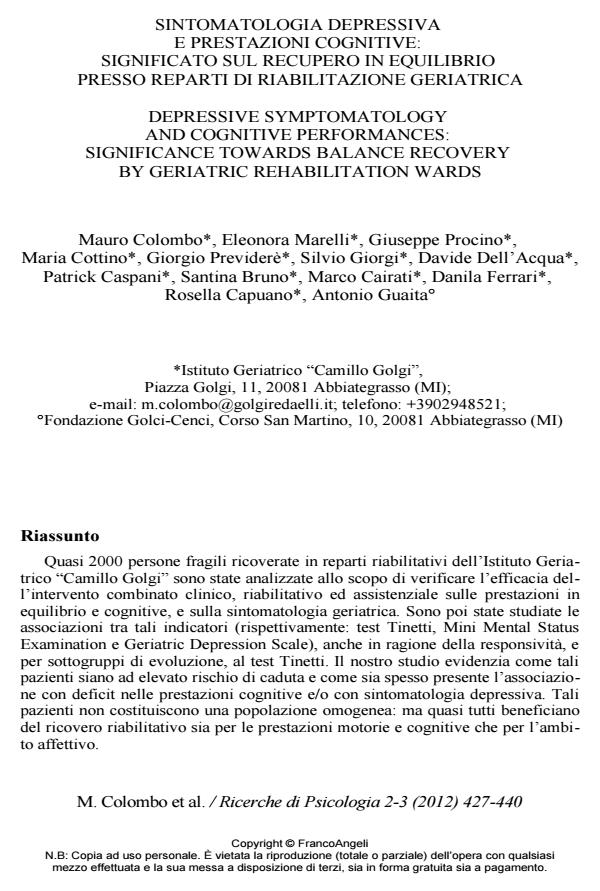Depressive symptomatology and cognitive performances: significance towards balance recovery by geriatric rehabilitation wards
Journal title RICERCHE DI PSICOLOGIA
Author/s Mauro Colombo, Eleonora Marelli, Giuseppe Procino, Maria Cottino, Giorgio Previderè, Silvio Giorgi, Davide Dell'acqua, Patrick Caspani, Santina Bruno, Marco Cairati, Danila Ferrari, Rosella Capuano, Antonio Guaita
Publishing Year 2013 Issue 2012/2-3
Language Italian Pages 14 P. 427-440 File size 226 KB
DOI 10.3280/RIP2012-002019
DOI is like a bar code for intellectual property: to have more infomation
click here
Below, you can see the article first page
If you want to buy this article in PDF format, you can do it, following the instructions to buy download credits

FrancoAngeli is member of Publishers International Linking Association, Inc (PILA), a not-for-profit association which run the CrossRef service enabling links to and from online scholarly content.
Almost 2000 frail subjects admitted in rehabilitative wards of the Geriatric Institute "Camillo Golgi" were analyzed in order to verify the effectiveness of the coordinate clinical, rehabilitative and assistive care on balance and cognitive performances and on depressive symptomatology. Further, associations among these indicators (Tinetti test, Mini Mental Status Examination and Geriatric Depression Scale, respectively) were studied, also according to responsiveness to Tinetti test and course subgroups in the latter test. Our survey underlines the high falls risk of our patients, as well as its frequent coexistence with cognitive impairment and/or depressive symptomatology. These persons don’t make up an homogeneous population: yet, almost everybody benefit from the stay in rehabilitative wards either in motor and cognitive performances or in the affective status.
Keywords: Geriatric rehabilitation, depressive symptomatology, cognitive impairment
Mauro Colombo, Eleonora Marelli, Giuseppe Procino, Maria Cottino, Giorgio Previderè, Silvio Giorgi, Davide Dell'acqua, Patrick Caspani, Santina Bruno, Marco Cairati, Danila Ferrari, Rosella Capuano, Antonio Guaita, Sintomatologia depressiva e prestazioni cognitive: significato sul recupero in equilibrio presso reparti di riabilitazione geriatrica in "RICERCHE DI PSICOLOGIA " 2-3/2012, pp 427-440, DOI: 10.3280/RIP2012-002019